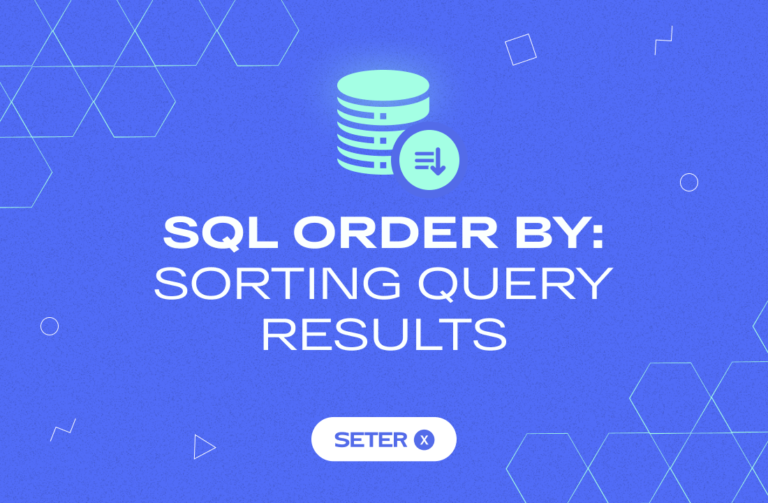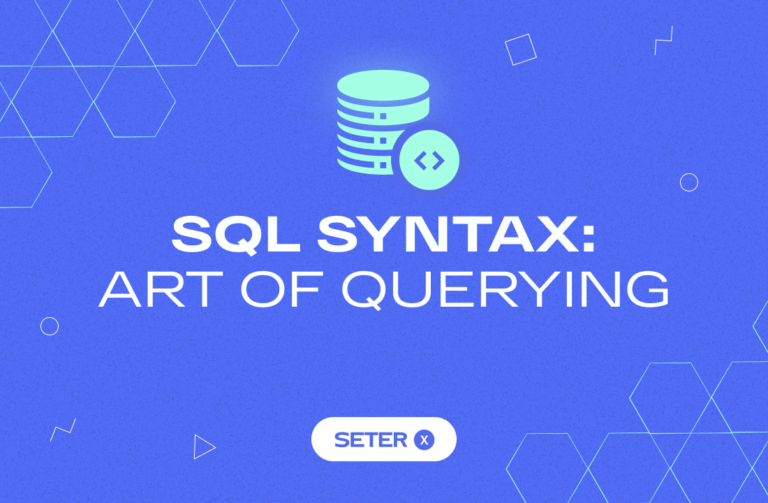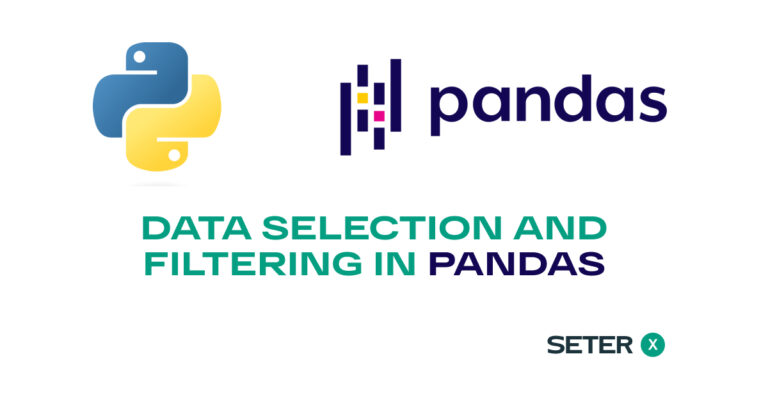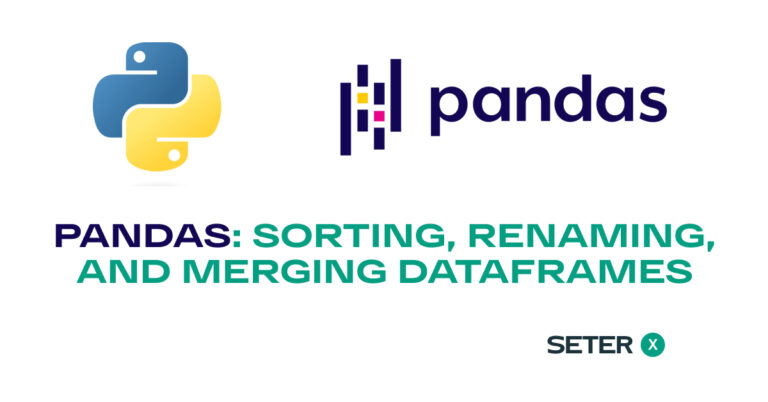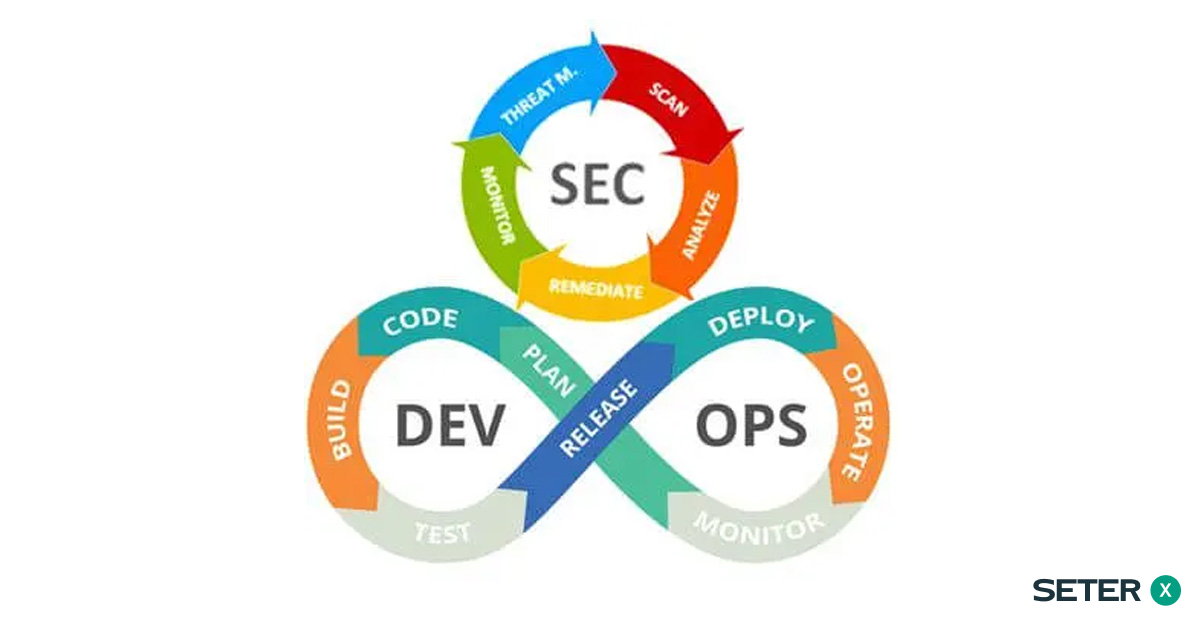
DevSecOps definition
DevSecOps is an approach to software development that emphasizes the integration of security practices into every phase of the software development lifecycle (SDLC). DevSecOps is a combination of three core principles: Development (Dev), Security (Sec), and Operations (Ops).
The goal of DevSecOps is to create a culture of security that is integrated into the entire development process, from design to deployment. This approach ensures that security is not an afterthought, but is instead an integral part of the software development process. By integrating security practices throughout the development cycle, organizations can identify and remediate security issues earlier in the process, reducing the overall risk to the organization.
In essence, DevSecOps is about creating a secure and resilient software development process that is able to respond to threats and vulnerabilities in real time. This approach requires collaboration between development, security, and operations teams to ensure that security is not just a checkbox but is ingrained into every aspect of the development process.
Software development lifecycle definition
The software development lifecycle (SDLC) is a process that outlines the steps involved in designing, developing, testing, deploying, and maintaining software applications. It’s a framework that provides a structured approach to software development and helps ensure that software is built efficiently, effectively, and with a focus on quality.
What is the difference between DevOps and DevSecOps?
While DevOps and DevSecOps share some common principles, there are significant differences between the two approaches. DevOps focuses on collaboration and communication between development and operations teams to streamline the software development process, while DevSecOps adds security as a key component to the DevOps approach.
One of the key differences between DevOps and DevSecOps is the focus on security. DevOps focuses on the speed and efficiency of the development process, while DevSecOps emphasizes the importance of security throughout the entire development process. In a DevSecOps environment, security is integrated into every stage of the development process, from design to deployment. This means that security is not just a bolt-on at the end of the process, but rather an integral part of the development process itself.
Another difference between DevOps and DevSecOps is the roles and responsibilities of the teams involved. In a DevOps environment, development and operations teams are the primary players, with a focus on delivering software quickly and efficiently. In a DevSecOps environment, security teams are also involved in the development process, working alongside development and operations teams to ensure that security is integrated into every stage of the process.
In addition, DevSecOps places a greater emphasis on testing and automation. In a DevSecOps environment, security testing is automated and integrated into the development process. This means that security vulnerabilities can be identified and addressed earlier in the development cycle, reducing the overall risk to the organization.
Finally, DevSecOps requires a cultural shift towards security. In a DevSecOps environment, security is not just the responsibility of the security team but is the responsibility of everyone involved in the development process. This requires a cultural shift towards security awareness and a focus on security as an integral part of the development process.
In summary, while DevOps and DevSecOps share some common principles, DevSecOps places a greater emphasis on security and requires a cultural shift towards security awareness. By integrating security into every aspect of the development process, DevSecOps ensures that software is developed securely and can respond to threats and vulnerabilities in real time.
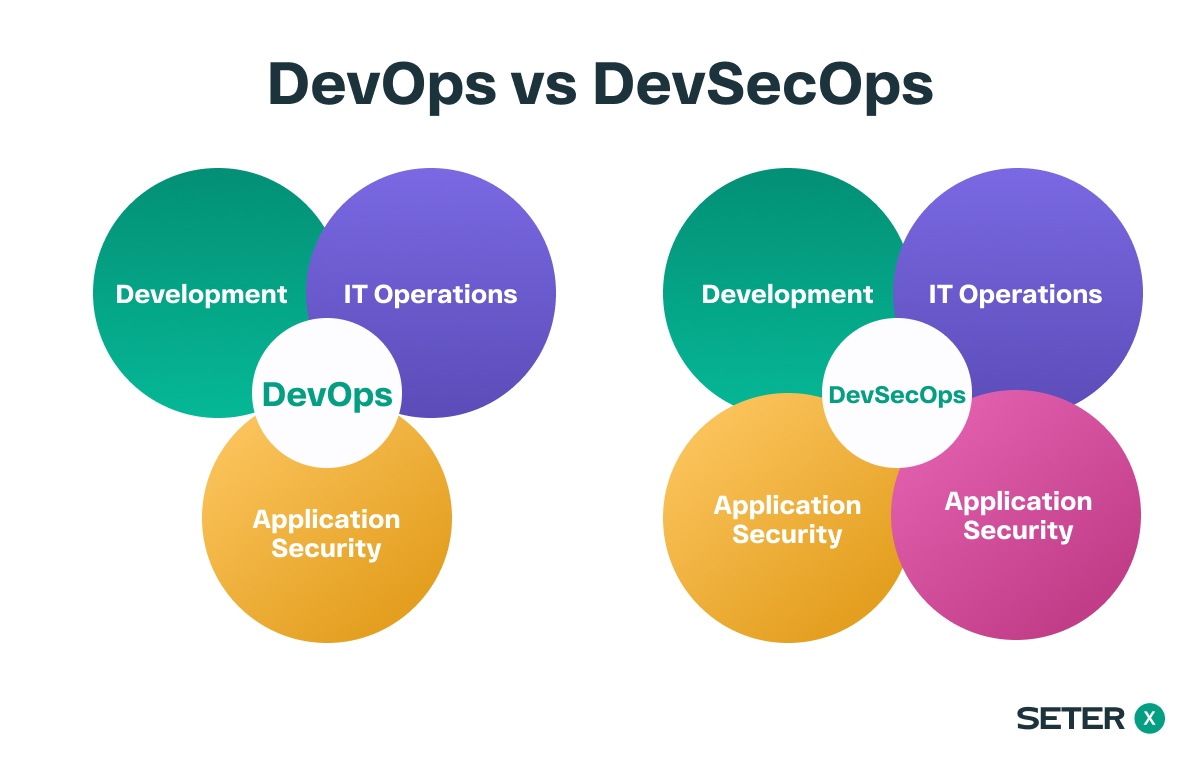
Why is DevSecOps important?
Integrates security into every aspect of the development process
DevSecOps integrates security teams with development teams, allowing security to be a key consideration throughout the development process. By involving security teams from the beginning of the development process, organizations can ensure that security is not just a bolt-on at the end but is integrated into every aspect of the development process.
Ensures that security is not an afterthought but an integral part of the development process
In traditional development environments, security is often treated as an afterthought, with security teams working separately from development teams. In contrast, DevSecOps integrates security teams with development teams, creating a collaborative approach to security. This ensures that security is not just a checkbox but is ingrained into every aspect of the development process.
Helps organizations address the changing threat landscape by identifying and addressing security vulnerabilities in real-time
As threats become more sophisticated and frequent, it is essential that organizations are able to respond quickly and effectively. By integrating security practices into the development process, DevSecOps helps organizations identify and address security vulnerabilities in real-time, reducing the risk of security breaches and data loss.
Addresses both application and infrastructure security, reducing the overall risk of security breaches
In addition to addressing application security, DevSecOps also addresses infrastructure security. This is essential because a vulnerability in one area can lead to a security breach in another. By integrating security into both application and infrastructure development, organizations can ensure that both are secure, reducing the overall risk of security breaches.
Creates an organizational culture of security awareness
By integrating security into every aspect of the development process, DevSecOps helps to raise security awareness and create a culture where security is everyone’s responsibility. This cultural shift towards security awareness helps to reduce the overall risk to the organization and ensures that security is not just an afterthought, but is a key consideration in every aspect of the development process.
What are the application security tools commonly utilized in DevSecOps?
DevSecOps integrates security into every aspect of the development process, and there are several application security tools that DevSecOps teams use to ensure the security of the development process. These tools include:
Static Application Security Testing (SAST) tools: These tools are used to analyze source code for potential security vulnerabilities. They are often integrated into the development process, allowing developers to identify and fix security issues in real time.
Dynamic Application Security Testing (DAST) tools: These tools are used to scan applications in a production environment for potential security vulnerabilities. They are used to identify security issues that may have been missed during the development process.
Software Composition Analysis (SCA) tools: These tools are used to scan third-party code and libraries for known vulnerabilities. They help to ensure that the code used in the development process is secure.
Interactive Application Security Testing (IAST) tools: These tools combine elements of SAST and DAST to provide real-time security analysis during the development process.
In addition to these tools, DevSecOps teams also use a range of security controls and measures, such as access controls, firewalls, and encryption, to ensure the security of the development process. DevSecOps emphasizes shared responsibility for security between the development team and the security team, creating a collaborative approach to security.
Proactive security is a key element of DevSecOps, with security being integrated into every stage of the development process. Continuous delivery is also an important aspect of DevSecOps, with security checks being conducted at every stage of the development process, from code creation to deployment. This helps to ensure that the code is secure before it is deployed, reducing the risk of security breaches. Overall, DevSecOps teams use a range of tools and techniques to ensure the security of the development process, with security being an integral part of every aspect of the development process.
The Benefits of Adopting DevSecOps process
The adoption of DevSecOps offers several benefits to organizations. Here are some of the key advantages of implementing DevSecOps:
Improved security: By integrating security into the development process, DevSecOps helps organizations identify and address security issues early on, reducing the risk of security breaches and minimizing the potential impact of any security incidents.
Faster time-to-market: DevSecOps emphasizes automation and continuous delivery, which helps organizations accelerate their development cycles and bring new products and features to market more quickly.
Increased collaboration: DevSecOps fosters a culture of collaboration and shared responsibility between the development team, security team, and other stakeholders. This helps to break down silos and ensure that everyone is working together towards the same goals.
Cost savings: By identifying and addressing security issues earlier in the development process, DevSecOps can help organizations save money on remediation and avoid the costs associated with security incidents and breaches.
Improved customer trust: With security being an integral part of the development process, DevSecOps can help organizations build trust with their customers and demonstrate their commitment to security and data privacy.
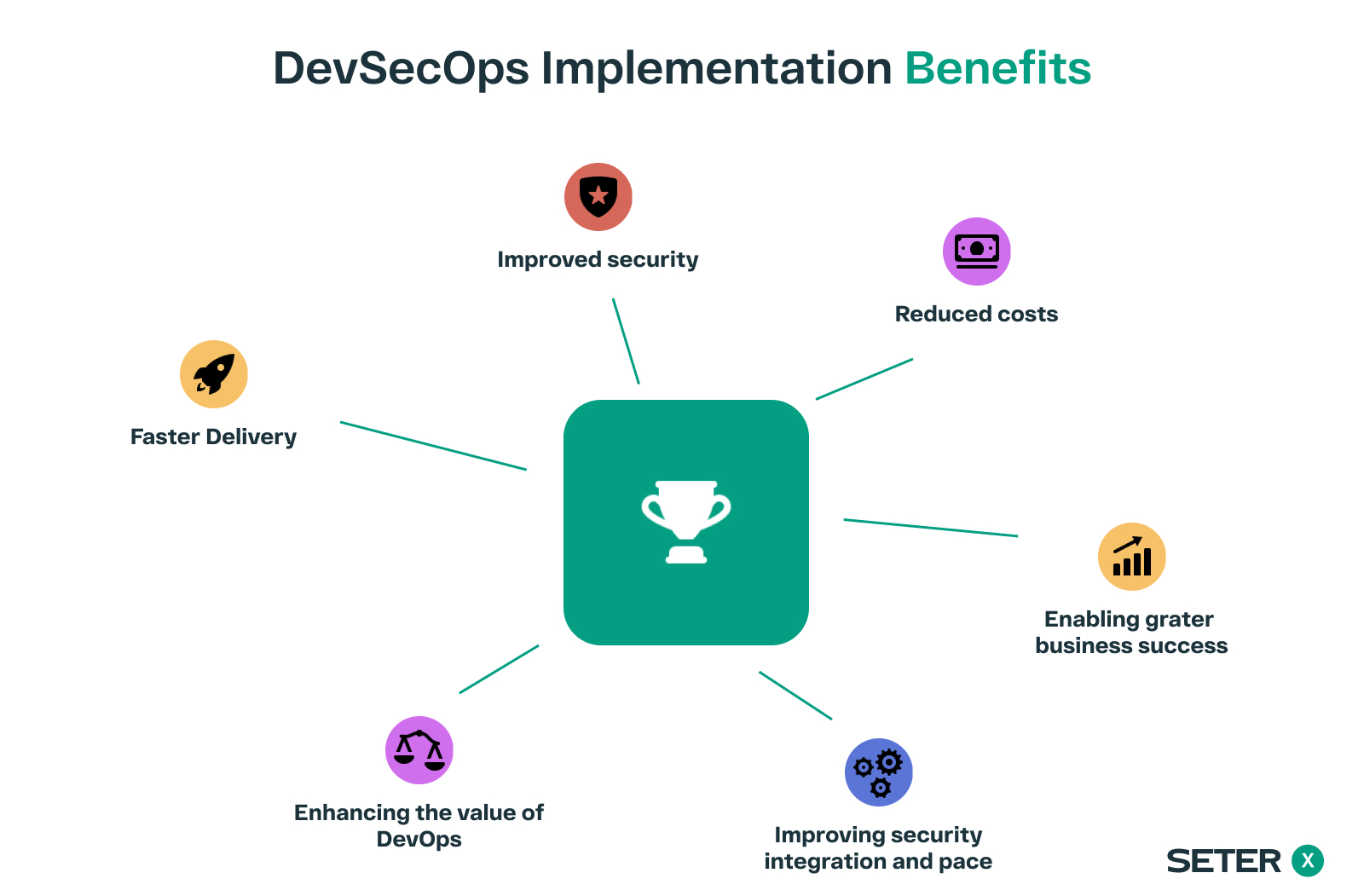
Best practices for implementing DevSecOps
Emphasize collaboration and shared responsibility: DevSecOps is a team effort that involves development teams, security teams, and operations teams working together towards a common goal. It’s important to foster a culture of collaboration and shared responsibility to ensure that everyone is working towards the same objectives.
Integrate security into the development process: Security should be a top priority at every stage of the development process. This includes designing secure architecture, writing secure code, conducting security testing, and implementing security measures.
Conduct continuous security testing: DevSecOps emphasizes continuous integration and continuous delivery, so security testing should be conducted throughout the development cycle. This includes using tools such as SAST, DAST, SCA, and IAST to identify security issues early on.
Implement secure coding practices: Developers should be trained in secure coding practices to ensure that they are writing code that is secure by design. This includes following secure coding guidelines and using secure coding frameworks.
Automate security processes: Automation can help to ensure that security testing and other security processes are conducted consistently and efficiently. This can help to identify security issues early on and reduce the time and effort required for remediation.
Monitor production environments: DevSecOps emphasizes proactive security, so it’s important to monitor production environments for potential security issues. This can help to identify and address security issues before they become major problems.
Conclusion
DevSecOps represents a cultural shift that emphasizes collaboration, shared responsibility, and proactive security throughout the software development lifecycle. By integrating security into the development process and conducting continuous security testing, organizations can reduce the risk of security issues impacting their development cycles and production environments. DevSecOps best practices also emphasize the importance of secure coding practices, automation, and monitoring production environments for potential security issues.
While implementing DevSecOps can be challenging, the benefits are clear: more secure software, faster development cycles, and improved alignment between development, security, and operations teams. As software continues to play an increasingly important role in our lives, adopting DevSecOps best practices will be crucial for organizations to ensure the security, reliability, and quality of their software applications.


